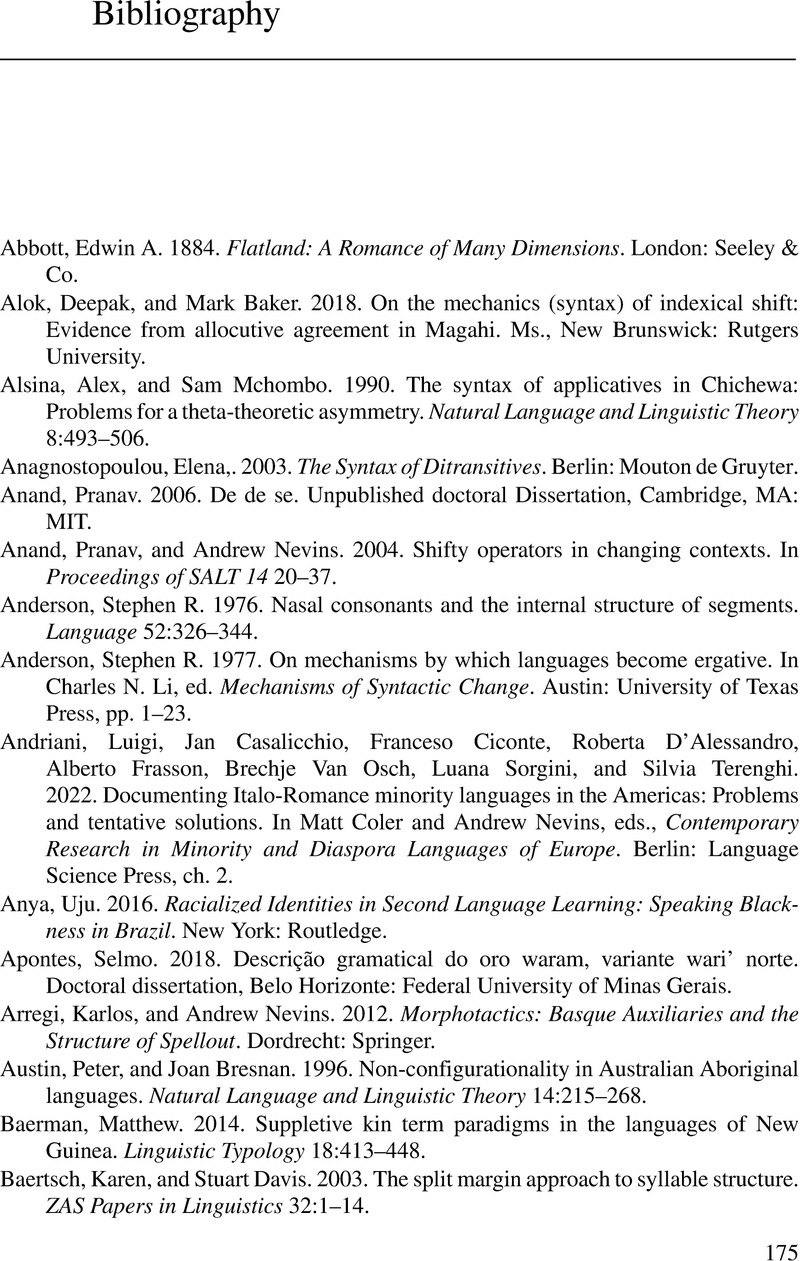Book contents
- Frontmatter
- Dedication
- Frontmatter
- Contents
- Figures
- Acknowledgments
- Abbreviations
- Map
- 1 Expanding the Canon: Minoritization in the World and in Linguistic Theory
- 2 Indexical Shift in Zazaki and Uyghur
- 3 Why Ergative Case Requires Structure in Basque and Ch’ol
- 4 Closest Conjunct Agreement in Slovenian and Xhosa
- 5 Configurationality of Objects in Chichewa and Warlpiri
- 6 Partial Nasality in Maxakalí and Kaingang
- 7 Symmetric Hands in Sign Language Phonologies
- 8 Number-Encoding on Verbs in Hiaki and Chechen
- 9 Conclusion: Towards Healthy Futures in the Language Sciences
- Bibliography
- Index
- References
Bibliography
Published online by Cambridge University Press: 18 November 2022
- Frontmatter
- Dedication
- Frontmatter
- Contents
- Figures
- Acknowledgments
- Abbreviations
- Map
- 1 Expanding the Canon: Minoritization in the World and in Linguistic Theory
- 2 Indexical Shift in Zazaki and Uyghur
- 3 Why Ergative Case Requires Structure in Basque and Ch’ol
- 4 Closest Conjunct Agreement in Slovenian and Xhosa
- 5 Configurationality of Objects in Chichewa and Warlpiri
- 6 Partial Nasality in Maxakalí and Kaingang
- 7 Symmetric Hands in Sign Language Phonologies
- 8 Number-Encoding on Verbs in Hiaki and Chechen
- 9 Conclusion: Towards Healthy Futures in the Language Sciences
- Bibliography
- Index
- References
Summary

- Type
- Chapter
- Information
- When Minoritized Languages Change Linguistic Theory , pp. 175 - 192Publisher: Cambridge University PressPrint publication year: 2022

